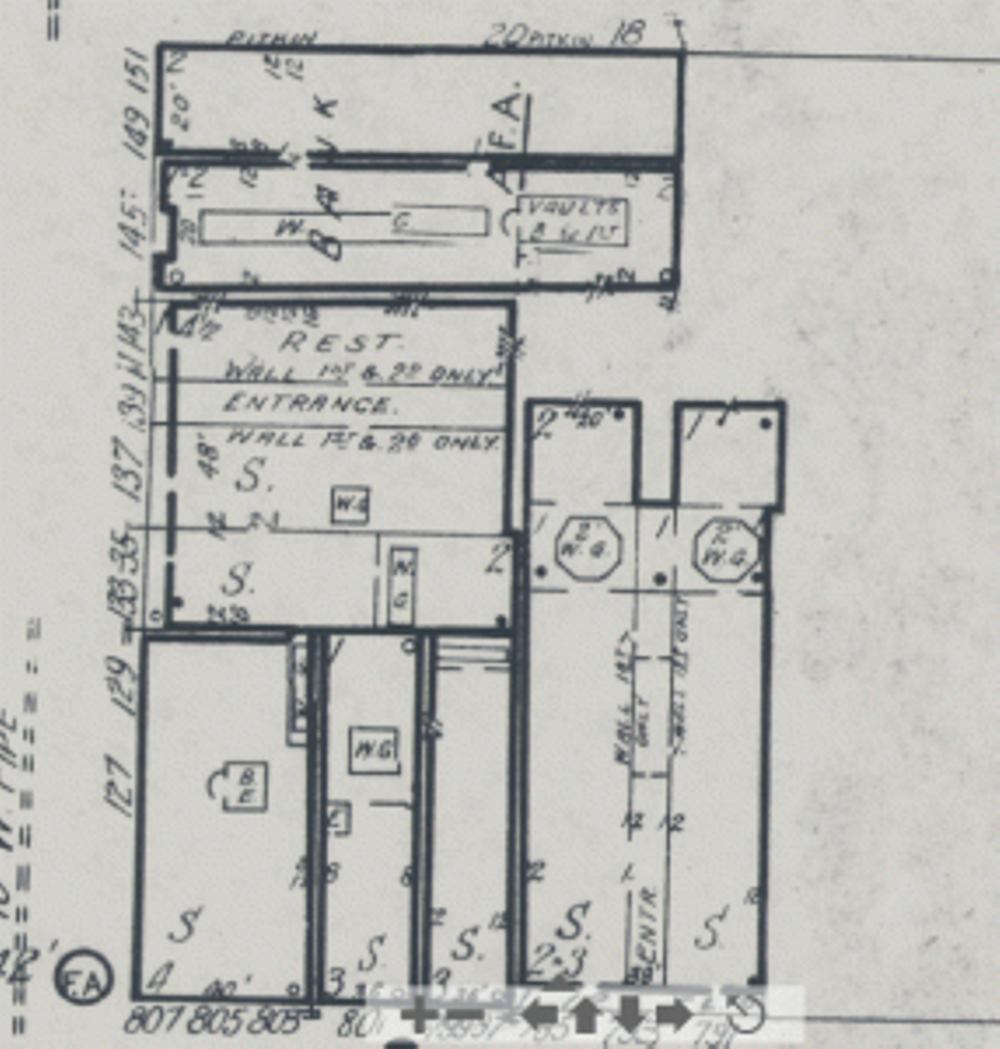
AT&T / SNET Central Office Building Three
400 State Street, New Haven, CT
Constructed between 1974 and 1980, “400 State Street” was built for the Southern New England Telephone Company as a part of a broader park of institutional buildings in New Haven, many of which are still important landmarks –e.g. the Eli. Its owner changed briefly during the reorganization of the telecommunication sector, but it has remained a telecommunication building. It is now owned by AT&T, and exemplifies late 1970s architecture. The abstract low reliefs on Court Street, and on the back of the building are particularly notable, as is the gallery of the façade. The block: Pitkin Alley – State St – Court St The lot on which the SNETCo building was built used to be one block with Pitkin Alley on the South –named after the later owners of the lots on both sides of the alley, and Court Street on the North side. The first known owner of the block was Capt. Ezekiel Hays, and the house that he built there remained in the hands of military men until the end of the 19th century. According to the Dana Scrapbook, the lots were reallocated between 1888 and 1911, to form a block of six narrow brick buildings. Called the pigeonhole block, it became the symbol of what was wrong with Lower State Street, and the physical center of the State Street Redevelopment and Renewal Plan. In 1967, this vibrant mixed-use block was mostly composed of food markets: United Bake Shop, Rosner’s Market, Gambardella Brothers Produce, Moquets Markets Meats, and Mohawk Market. The State Street Redevelopment and Renewal Plan & the SNETCo Building In the context of urban of Urban Renewal, the businesses of 372-415 State Street (now 400 State) were relocated, starting in 1969. The last relocated occupant of the “pigeonhole block” was Mr. Ferraro of Mohawk Market, who had managed to sign a document saying he could stay on there until the Redevelopment authority had built across the street on State Street. He eventually had to move in 1973. The first mention of any activity after that is in 1981: The AFL-CIO – Communication Workers of America. We can therefore assume that the SNETCo building had been built at that time. Yet it was most likely built as late as 1979-1980, because it is still listed as “project” in the 1979 Amendment to the renewal plan. At a larger scale, it is interesting to notice that it is the only building of the renewal plan that ended being built.
AT&T
Southern New England Telephone (SNET)
The lot on which the SNETCo building was built used to be one block with Pitkin Alley on the South –named after the later owners of the lots on both sides of the alley, and Court Street on the North side. The first known owner of the block was Capt. Ezekiel Hays, and the house that he built there remained in the hands of military men until the end of the 19th century. According to the Dana Scrapbook, the lots were reallocated between 1888 and 1911, to form a block of six narrow brick buildings. Called the pigeonhole block, it became the symbol of what was wrong with Lower State Street, and the physical center of the State Street Redevelopment and Renewal Plan. In 1967, this vibrant mixed-use block was mostly composed of food markets: United Bake Shop, Rosner’s Market, Gambardella Brothers Produce, Moquets Markets Meats, and Mohawk Market.
Researcher
Hugo Partouche
Date Researched
Entry Created
June 4, 2017 at 8:47 AM EST
Last Updated
July 3, 2025 at 1:41 PM EST by karinaencarnacion
Historic Name
Southern New England Telephone (SNET) Central Office Building Three
Style
ModernistBrutalistCurrent Use
VacantEra
1950-1980Neighborhood
OtherTours
Business and Commerce east of the GreenYear Built
1975
Architect
Westcott and Mapes
Current Tenant
Southern New England Telecommunication Company
Roof Types
FlatMonitorStructural Conditions
Good
Street Visibilities
Visible from the street
Threats
Neglect / DeteriorationDevelopmentExternal Conditions
Good
Dimensions
3 stories; 172' x 147' x 50'
Street Visibilities
Visible from the street
Owner
AT&T
Ownernishp Type
Private
Client
Southern New England Telecommunication Company
Historic Uses
Institutional







Comments
You are not logged in! Please log in to comment.